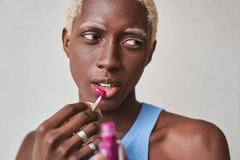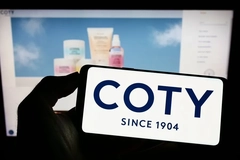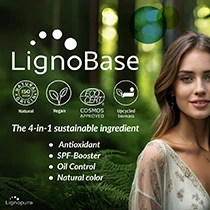Flower power: Givaudan on why Nympheal is a game-changing molecule for white floral notes
14 May 2024 --- Lily of the valley, also known as Convallaria majalis, is well-known for its soft, charming scent, bell-shaped flowers and sweet fragrance. The delicate scent has proven to dominate the fragrance industry and is the star attraction of Givaudan’s new molecule, Nympheal for white floral fragrances. The beauty and fragrance provider says the product is a result of decades-long expertise in muguet or lily of the valley aldehydes that give perfumes a fresh, powdery or soapy quality.
Personal Care Insights talks to Jeremy Compton, global head of Science and Technology — Fragrances at Givaudan about why the flavors and fragrances powerhouse calls Nympheal a game-changer in the white floral space and how he sees trends evolving with neuroscience, healthy aging and sustainability.
How timely is the unveiling of Nympheal, and why do you see it as a game-changer?
Compton: It is a new molecule in the perfumer’s palette and we’ve launched it externally to sell to others as well. It’s in the white floral space, which encompasses, from a creative point of view, the lily of the valley area specifically.
From household cleaning to prestige fragrances, white floral notes are incredibly important to consumers and for perfumers to create in this area. It’s a versatile molecule that comes out of significant research from our scientists in Shanghai and Zurich.
You say the lily of the valley is important across all platforms. Is that due to its versatility and cost-effectiveness since only a small amount of the molecule is needed?
Compton: The molecule has a very low odor threshold, meaning you don’t need much of it to smell it. That makes it very powerful and useful in a number of ways. Some new molecules can often be used in certain categories, but this can be used across many consumer segments.
It’s a small white floral flower with a delicate, all-encompassing smell. Nobody ever smells lily of the valley and dislikes it; therefore, it has become a very popular odor direction in many creations, and many of the fragrances we love worldwide have a heart built around a white floral, which is essentially lily of the valley. It appeals to many people in many markets. So that’s why it’s important.
Nympheal sits in this family as a powerful material that can be used to create a lily of the valley accord. No one has successfully managed to extract the natural lily of the valley, so it’s a very difficult flower to find directly from nature in the same way you can do with jasmine, rose or other types of materials. Most lily of the valley white floral creations are created around the power of the perfumer to recreate this type of note, and therefore, you use different materials to do it, and Nympheal is one that makes a difference. So that’s quite a huge feat — a game-changer. Given all the intricacies, Givaudan has had a strong heritage in creating molecules in the white floral area for many years.
Can you explain the blooming effect of this floral fragrance and the main difference with its long-lasting effectiveness?
Compton: Bloom is what you smell at first. The best definition of bloom is if you’re having a shower and you start to use a product and that initial smell — that atmospheric smell that you get when you’re having a shower from the products that you’re using, whether it’s shampoo, shower gel or soap — that to me is bloom. To have a dual effect, it must also stay at the heart of the fragrance for a long time, which will help to deposit performance and long-lasting effectiveness. This is the performance you get on cleanly washed laundry, hair, skin or surfaces. It’s not a top or a heavy bass note but the fragrance that plays at both ends of performance — a very full-bodied molecule.
What trends do you see in fragrances with science and innovation as we move forward?
Compton: The whole regulatory space is changing. The regulations in almost every country worldwide are now different and getting more complex and difficult. That means we lose some molecules and have to replace them. Nympheal came out of a program looking for new white floral materials to replace some older ones that will no longer be used.
 Compton says Nympheal is a powerful molecule that can be used to create a lily of the valley accord.The sustainability profiles of what we put into fragrances are also changing and will continue to change. For example, reducing the carbon footprint of products used in fragrances plays a role in terms of where carbon comes from. Today, a lot of our carbon comes from fossil fuels. So, how do we find alternative carbon sources for the future?
Compton says Nympheal is a powerful molecule that can be used to create a lily of the valley accord.The sustainability profiles of what we put into fragrances are also changing and will continue to change. For example, reducing the carbon footprint of products used in fragrances plays a role in terms of where carbon comes from. Today, a lot of our carbon comes from fossil fuels. So, how do we find alternative carbon sources for the future?
Chemicals are needed for medical treatments, building houses and surfacing roads; fragrances are a small part of that. On the other hand, not everything natural is good for you. Not everything natural is necessarily sustainable because they’re only grown in certain parts of the world and must be transported long distances. You need lots of water and lots of energy to create many good natural materials, so it’s important to get the balance right.
One thing is for sure: There is a lot of research happening in many universities around the world to find alternative ways to use carbon that does not come from below ground — developing ways to recycle carbon, take it out of the atmosphere and developing ways to generate carbon from other sources of material. As the population grows, there will be pressure to deliver food to people versus products. So you must find alternatives to using land. That’s the big dichotomy. The good thing is that a huge amount of research is going on, and I am confident people will come up with great solutions to replace fossil fuels in the long term. It’s just not going to happen overnight, and it will require a lot of collaboration between different parts of the chemical industry to be successful.
You highlight neuroscience as another key trend. Could you elaborate on your neuroscience research program and how Givaudan’s MoodScentz, VivaScentz and DreamScentz technologies can make a positive impact?
Compton: We have a separate part of the research looking at the neuroscientific benefits of fragrance. There, you can see empirically again that Givaudan has a long history — over 35 years looking at the positive effects of fragrance from a scientific, neurological and neuroscience point of view. We just relaunched our mood and emotion technology called MoodScentz, which looks at how we can measure the positive benefits of a fragrance in terms of how you feel.
Out of that, we have three pillars and 58 emotional benefits, which are closer to what consumers want. The language consumers use today is far more sophisticated than it used to be, and we must be able to link the language to trends and the scent they expect to smell.
We have a well-being technology called VivaScentz, and we’ve developed a scientific way to measure the positive effects of fragrance on well-being. That’s a separate technology; we can create fragrances to comply with how we measure that.
We also can create technologies based on similar research that help people sleep more easily and prolong good sleep, which is very important to consumers worldwide. Many people recognize that they don’t get enough sleep. So it’s an important trend everywhere and especially important for the older “silver” generation. Many people complain about getting old, getting a good night’s sleep and fragrance used in the right way can have a positive effect here as well.
Consumers today are much more interested in taking proactive steps to keep themselves healthy. One of the positive side effects of COVID was having the time to reflect on one’s health. More people are proactively ensuring they stay healthy longer and feel better. That includes using products that help, and fragrance can play a role in these products.
It’s an exciting time for science, thanks to changes in how people approach it. For instance, understanding the genome has helped people see how nature can be used to develop products through biotechnology and fermentation. This was not possible years ago, so it opens up many doors to look at how to do things and Givaudan has partnerships with companies to research and innovate in completely new ways.
By Anita Sharma













